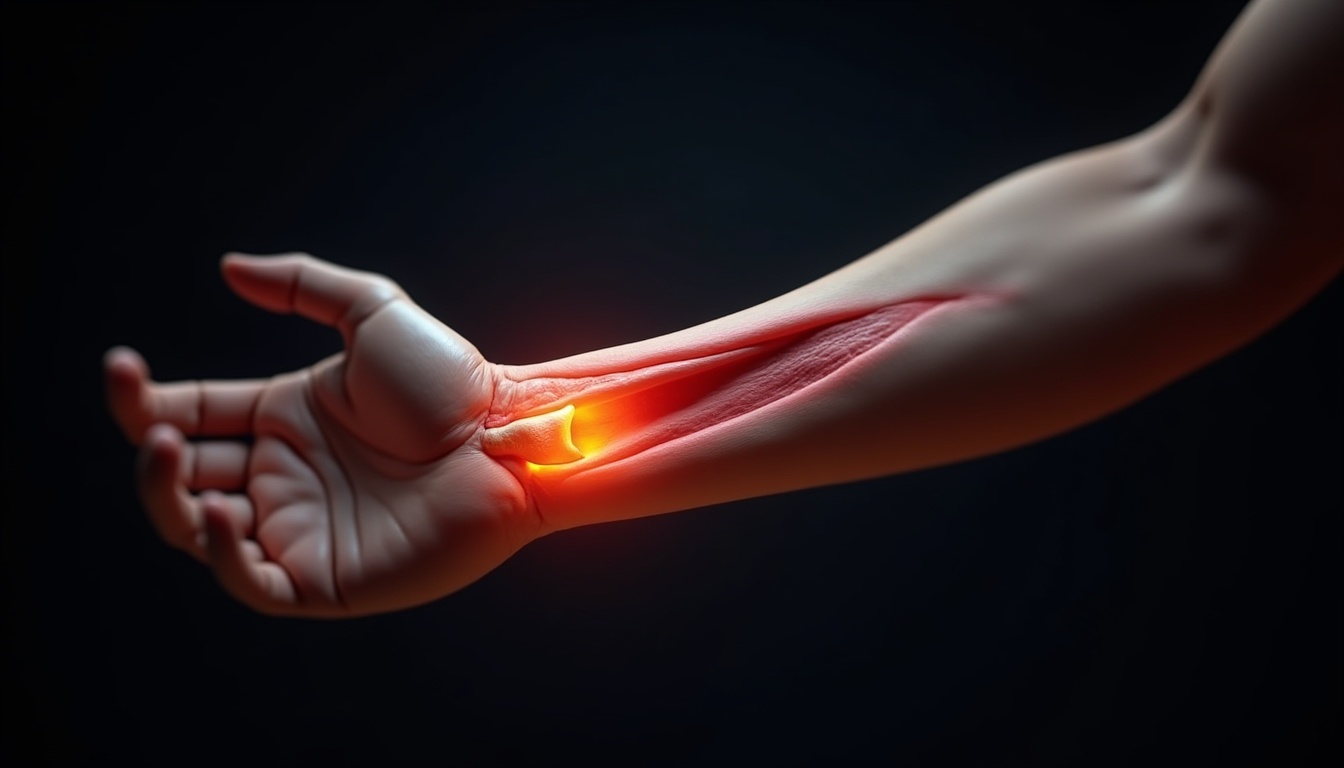Tendons are key structures of the musculoskeletal system. They are subjected to constant load and can be easily injured, especially when there is overuse or poor recovery. Tendon injuries, such as tendinitis, affect millions of people each year, limiting their mobility and quality of life.
Thanks to advances in applied neuroscience, it is now possible to support the recovery of tendon injuries through innovative technologies such as NESA® non-invasive neuromodulation, which acts directly on the autonomic nervous system to promote the ideal biological environment for soft tissue repair.
What are tendon injuries?
A tendon injury involves inflammation, degeneration, or rupture of the tissue that connects muscle to bone. The most frequent include:
- Tendonitis (acute inflammation)
- Tendinosis (chronic degeneration without inflammation)
- Partial or complete ruptures
These tendon injuries often affect the Achilles tendon, rotator cuff, epicondyle, or plantar fascia.
Symptoms and Risk Factors
The most frequent symptoms of tendon injuries include:
- Localized pain when moving the joint
- Stiffness or loss of muscle strength
- Visible inflammation
- Functional limitation
The most common risk factors are:
- Repetitive movement or overload
- Aging or loss of tendon elasticity
- Stress, chronic fatigue and poor rest
- Training without adequate recovery
How to strengthen tendons effectively
Active prevention is essential. Here are some evidence-based strategies on how to strengthen tendons:
- Progressive eccentric exercises
- Dynamic stretching and controlled mobility
- Diet rich in collagen, vitamin C and magnesium
- Rest and stress management
- Gentle neuromuscular stimulation techniques such as NESA® non-invasive neuromodulation
This last point is becoming increasingly relevant, especially in post-injury recovery processes. You can learn more about how it works in this article on NESA® technology.
If you wonder how to safely strengthen tendons, the key lies in combining controlled exercise and neuromodulation techniques.
Specialists agree that knowing how to strengthen tendons helps prevent injuries and improves functional recovery.
NESA® Non-Invasive Neuromodulation: How It Works on Tendons
NESA® microcurrents stimulate strategic points of the peripheral nervous system, generating regulatory responses at the central and autonomic levels.
The benefits for the musculoskeletal system include:
- Improved sleep quality (key to tissue regeneration)
- Reduction of pain and muscle tone associated with compensations
- Increased blood flow and tissue oxygenation
- Activation of the parasympathetic nervous system, which facilitates the natural repair of connective tissue.
Treatment for Tendinitis: A Comprehensive Approach
In cases of tendinitis or tendon overload, the intervention must be integral:
- Active rest + specific exercise
- Education on load management and relapse prevention
- NESA® Non-invasive Neuromodulation as a therapeutic complement
- Coordination between physiotherapy, nutrition, and rest management
Including NESA® technology as part of tendinitis treatment optimizes repair processes without invasive or pharmacological effects.
Many professionals combine eccentric exercise, guided rest, and NESA® for a more effective tendinitis treatment, especially in resistant or chronic cases.
🎥 Clinical case: Patellar tendinopathy
Discover in this video how a comprehensive approach — including therapeutic exercise and NESA® non-invasive neuromodulation — can make a difference in treating patellar tendinopathy.
Video transcript:
Hello, my name is Berni Machio, I am a physiotherapist and osteopath, and I am here to present the following clinical case. In this case, I will present a patellar tendinopathy. The patient is a 23-year-old male with a post-match tendinopathy, traumatic, following a fall during a basketball game. He is an amateur player, and the treatment we carried out in combination with other therapies in the clinic, together with NESA therapy, consisted of the first two to three sessions. We worked with programme number one, programme number two and programme number three. Where? At the central level. As these three sessions progressed, in order to generate a more distal approach, we started working at the level of L4, performing metameric work there. It is important to note that the director can be moved. Never, when using the director, should you place the same sticker in the same spot again. We use a different director for each of the applications we perform. Then, from the eighth session onwards, we began working directly on the patellar tendon area. We placed the electrodes locally, targeting the injured area, and modulated with programme number six, programme number two, and programme number seven, working locally on the tendon. This, in combination with other types of therapies and physical exercise, was one of the positive inputs that helped us move this patient forward. One important point, especially when working with neuromodulation, was that the patient showed clear improvement regarding pain after treatment, particularly upon palpation of the tendon. I hope this case helps you better understand the concept of working with the NESA non-invasive neuromodulation system.
